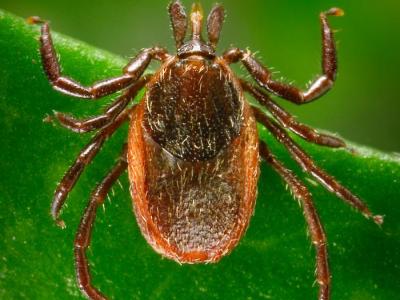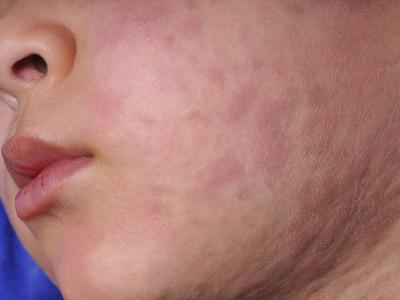New coronaviruses armed with the capacity to cause severe human disease are becoming more frequent, raising the stakes for global preparedness, along with a need for a vaccine that could broadly protect against the most dangerous ones, such as SARS-CoV-2.
To help jump-start the process, the Center for Infectious Disease Research and Policy (CIDRAP) at the University of Minnesota announced today that it has received $1 million in grants from the Rockefeller Foundation and the Bill & Melinda Gates Foundation to create a Coronavirus Vaccines Research and Development (R&D) Roadmap.
The grants will support an R&D roadmap for developing vaccines that provide broad protection against betacoronaviruses or a subset of betacoronaviruses, which mainly circulate in bats and rodents, but can spill over into human populations. Over the past few years, health groups have tapped CIDRAP to develop similar vaccine roadmaps for influenza, Zika virus, Nipah virus and Ebola/Marburg viruses.
Michael T. Osterholm, PhD, MPH, CIDRAP's director, said current COVID-19 vaccines may not protect against future SARS-CoV-2 variants, and the threat of a novel virus spillover looms in animal populations.
"It's only a matter of time before another coronavirus spills over into human populations," he said. "A coronavirus vaccines roadmap will provide a framework for the development of broadly protective coronavirus vaccines to ensure that we are prepared to respond to SARS-CoV-2 variants and the emergence of future coronaviruses with pandemic potential."
(CIDRAP publishes CIDRAP News, but the news and research functions of the center operate independently.)
A worrisome coronavirus track record
In just two decades, three novel coronaviruses have emerged, signaling a shift and raising deep concerns in the scientific and public health communities. In early 2003, severe acute respiratory syndrome (SARS) emerged in Asia, spreading to 29 countries in just 6 months, sickening nearly 8,100 people and resulting in 774 deaths. Researchers determined that the cause was a novel coronavirus, SARS-CoV (now referred to as SARS-CoV-1).
Nine years later, another novel coronavirus—Middle East respiratory syndrome coronavirus (MERS-CoV)—was identified in humans for the first time in the Middle East, causing severe and often fatal respiratory disease in people, along with healthcare-related clusters, including a large one in South Korea in 2015 that was linked to a traveler. In its latest update, the World Health Organization (WHO) said it has received reports of 2,585 MERS-CoV cases, 891 of them fatal.
Then in late 2019, another novel coronavirus—SARS-CoV-2—triggered an unexplained pneumonia outbreak in China that in just a few months sparked the COVID-19 pandemic, which still sweeps the globe with multiple surges powered by evolving variants and subvariants. Well into its third year, the pandemic's toll is staggering: at least 510 million illnesses and 6.2 million deaths worldwide.
Global health officials are already bracing for the next novel coronavirus. For example, the Coalition for Epidemic Preparedness Innovations (CEPI) recently launched a "100 days mission," backed by G7 and G20 countries, to have safe, effective vaccines against the next pandemic virus within 100 days.
The $3.5 million plan over the next 5 years includes, for example, reconfiguring global drug regulatory systems, scaling up manufacturing, and beefing up supply chains. Also, the plan includes building a library of prototype vaccines against the 25 viruses most likely to infect humans, including coronavirus.
In a commentary, CEPI's Director Richard Hatchett, MD, said though SARS-CoV-2 vaccines were developed at unprecedented speed, they didn't come out of nowhere. "The story of COVID-19 vaccine success shows us how a prototypic-vaccine approach works," he said. "The years of diligent work included painstaking research into vaccines for two closely related coronaviruses, SARS-CoV-1 and MERS-CoV."
Next steps, keeping momentum going
The WHO is taking the lead in coordinating the development of broadly protective coronavirus vaccines, and the betacoronavirus roadmap is another tool to help clarify research priorities and track progress.
Kristine Moore, MD, MPH, CIDRAP's medical director, said the roadmap will provide a framework that identifies key goals and milestones that need to be completed to develop broadly protective coronavirus vaccines.
"At this point, we don’t know if the roadmap will address vaccines against all betacoronaviruses or a critical subset of coronaviruses that includes SARS-CoV-1 and SARS-CoV-2 (referred to as sarbecoviruses). We are still working out the scope of the project."
She said CIDRAP's previous work in creating the Influenza Vaccines R&D Roadmap (IVR) is most similar to the new betacoronavirus project, given that both have a goal of setting out a game plan for developing broadly protective vaccines.
As the next steps, a steering group of about 10 people will guide the process, which will later include the input of about 30 experts who will shed light on key issues, such as genetic evolution and immunology. A public comment period will be open to all international stakeholders sometime in the fall, and the group's plan is to unveil a near-final draft of the roadmap by the end of the year.
Moore said it's not easy planning for the next novel coronavirus threat while experts are still in the heat of the COVID-19 pandemic battle. "Everyone is so busy," she said, adding that all of the roadmap meetings will likely take place on Zoom. "But we don't want to lose momentum. We have to be prepared."





















